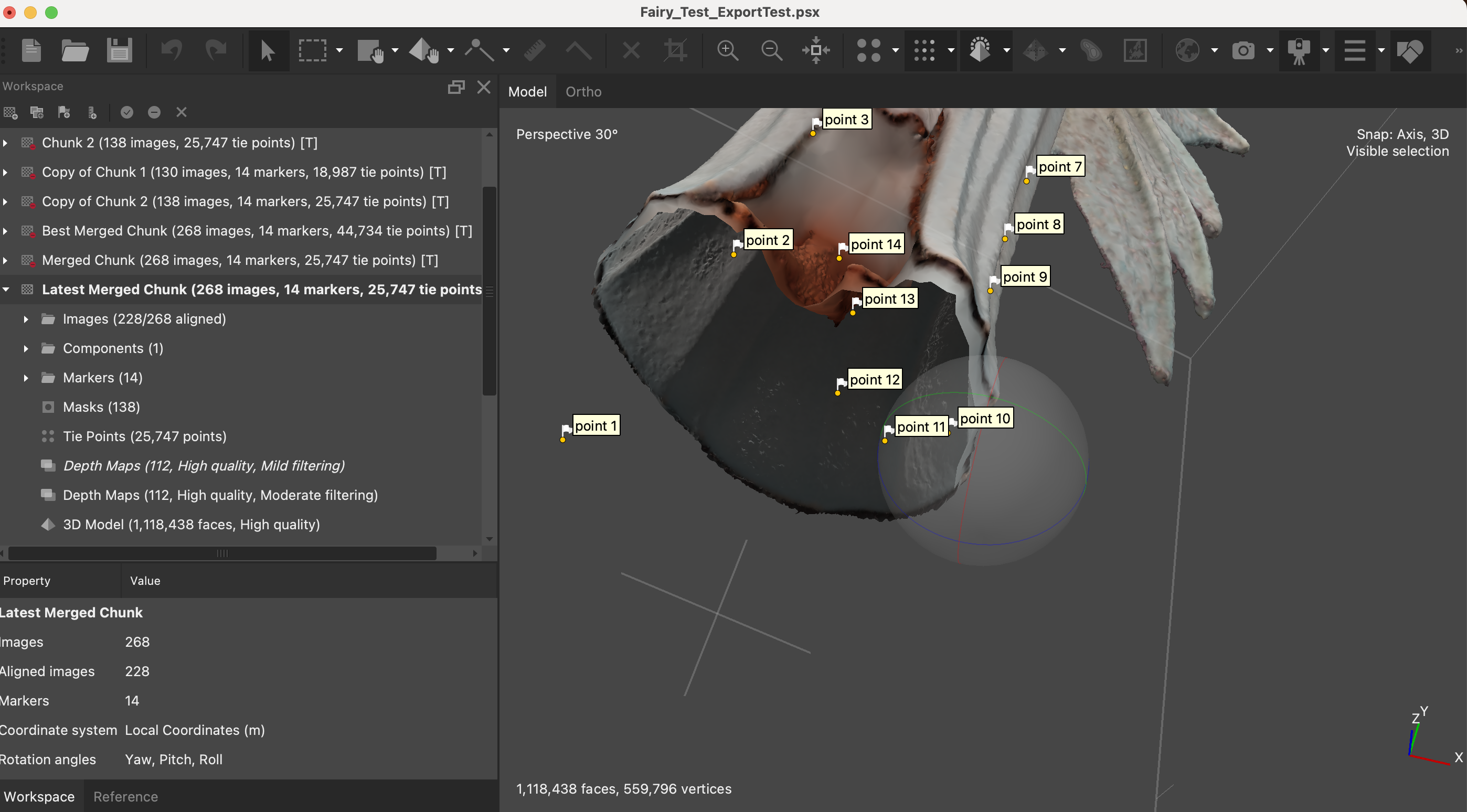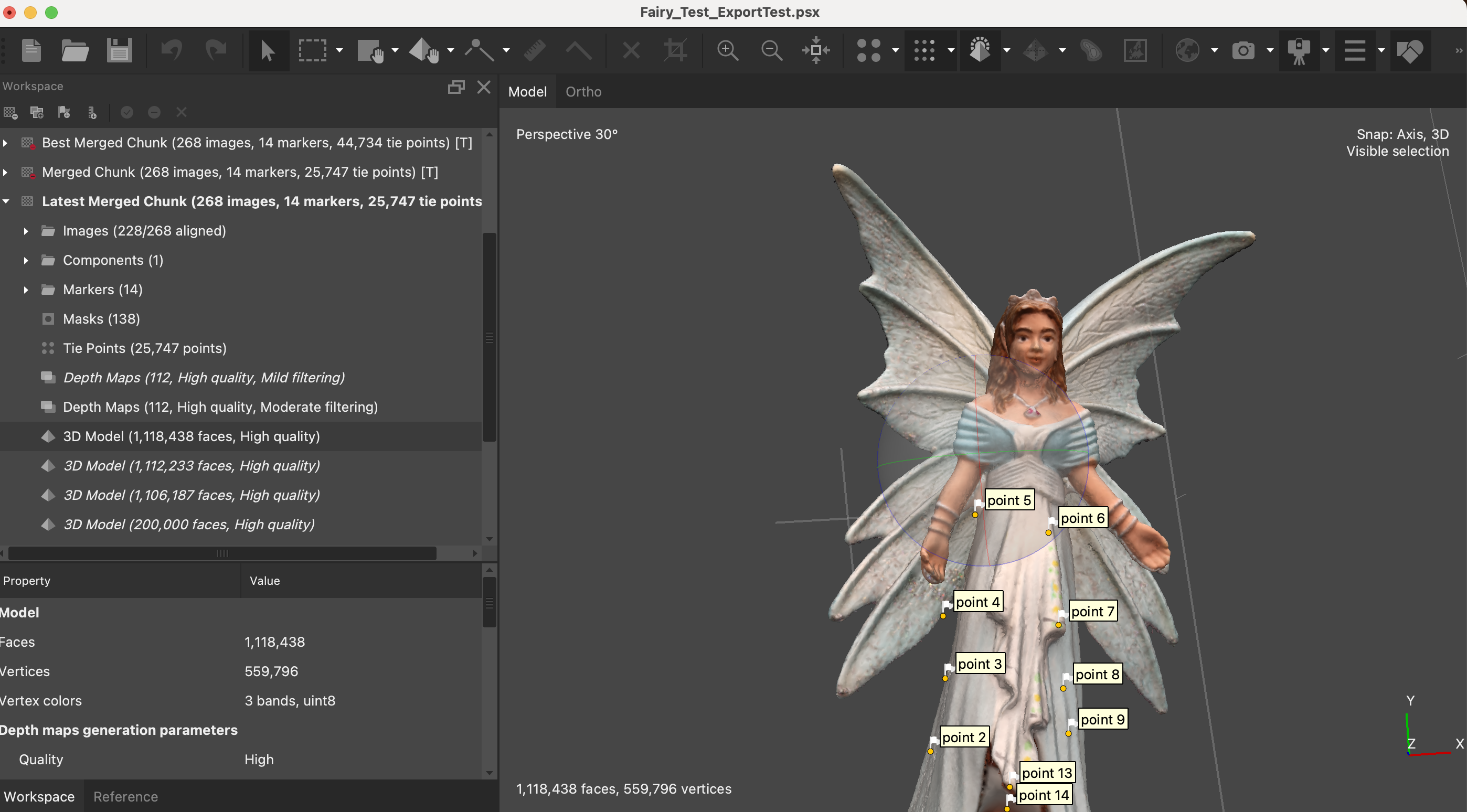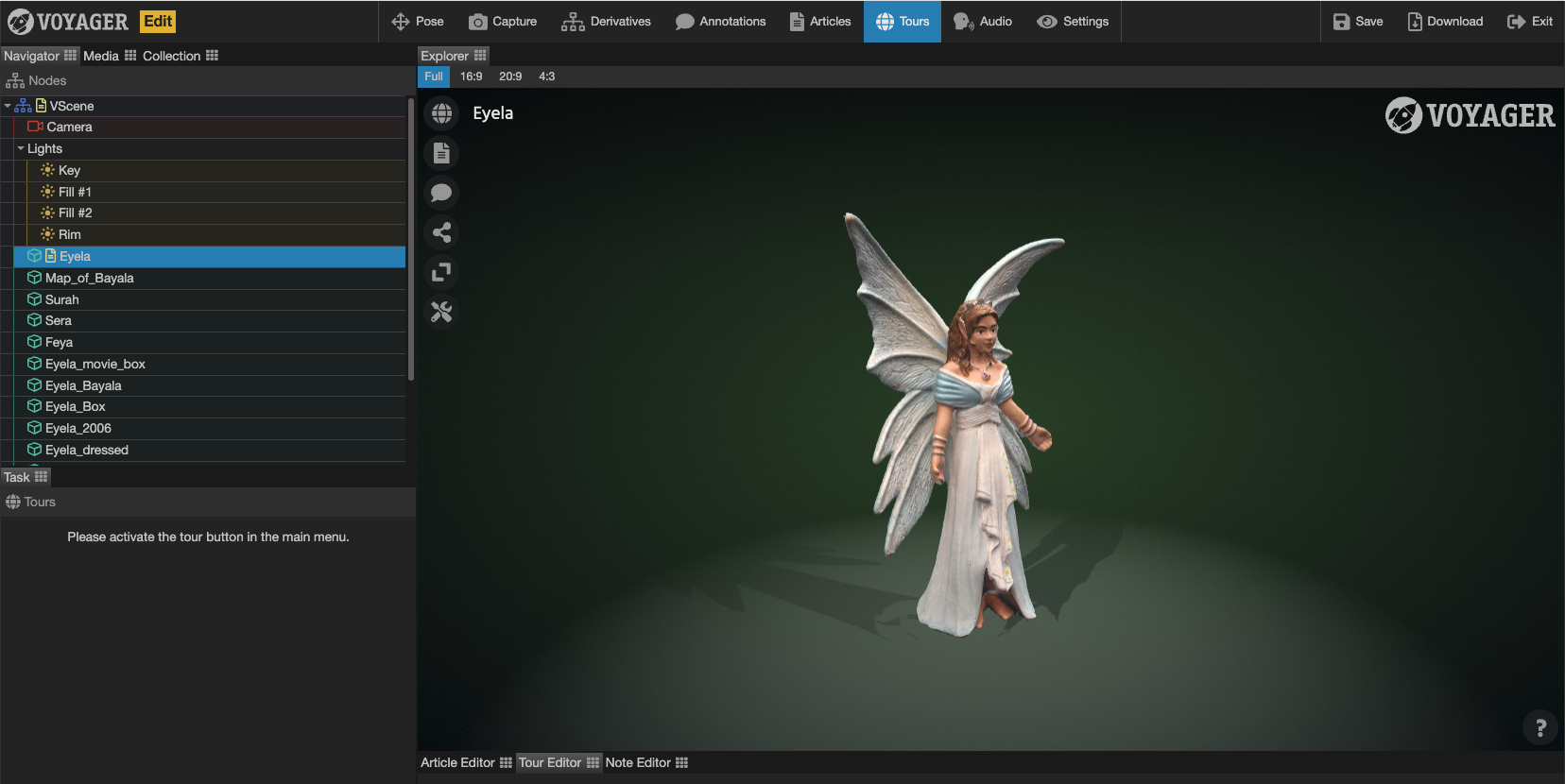
For our 3D scholarly edition, we chose an elf toy, because elves are omnipresent in many parts of popular culture today, including movies for children, video games and adult fantasy literature. Our specific elf was the childhood toy of one of us, the creators, she used to be played with a lot. The elf, named Eyela, is part of a bigger elven world, so children can collect the figurines to build their own collection.
We came up with many narratives and topics surrounding the elf, such as their history, skin colour, representation and development in literature over time, femininity and her personal backstory in her elven universe.
Before the digitisation, we planned the tours for Voyager on our Miro Board. One Tour would cover the history of elves and fairies, another Eyela’s backstory and the last tour would be the reflection tour.
To develop the 3D model, we used photogrammetry and structure from motion in the software Metashape Pro. As explained in the previous article. To guarantee perfect lightning and illumination as well as enough overlapping between the photos, we put Eyela on a rotating table into a lightbox. We took pictures of Eyela upright and upside down, to make sure that we captured every detail of her. In the end, we had about 250 photos and processed them in Metashape Pro.
The processing was a challenge, not only to our computer but also because the first models did not turn out very well. We tried different workflows. Firstly, we let the software estimate the image quality. Then, we aligned the pictures and generated the point cloud. Next, we created the model and built the texture.
Unfortunately we had to rerun the processing several times because there was always noise and holes distorting our model. The parts of her feet under her skirt were especially a pain point for us.


After finishing the model, we exported it in three versions: one high quality .glb file and one low quality thumb .glb file and additionally an .obj file.
The models were imported into Voyager, where we set the metadata and scaled the figurine to the right size. In this software, we implemented the tours for our final edition, adding annotations, articles, audios and other 3D models to our scene to make it more realistic.
